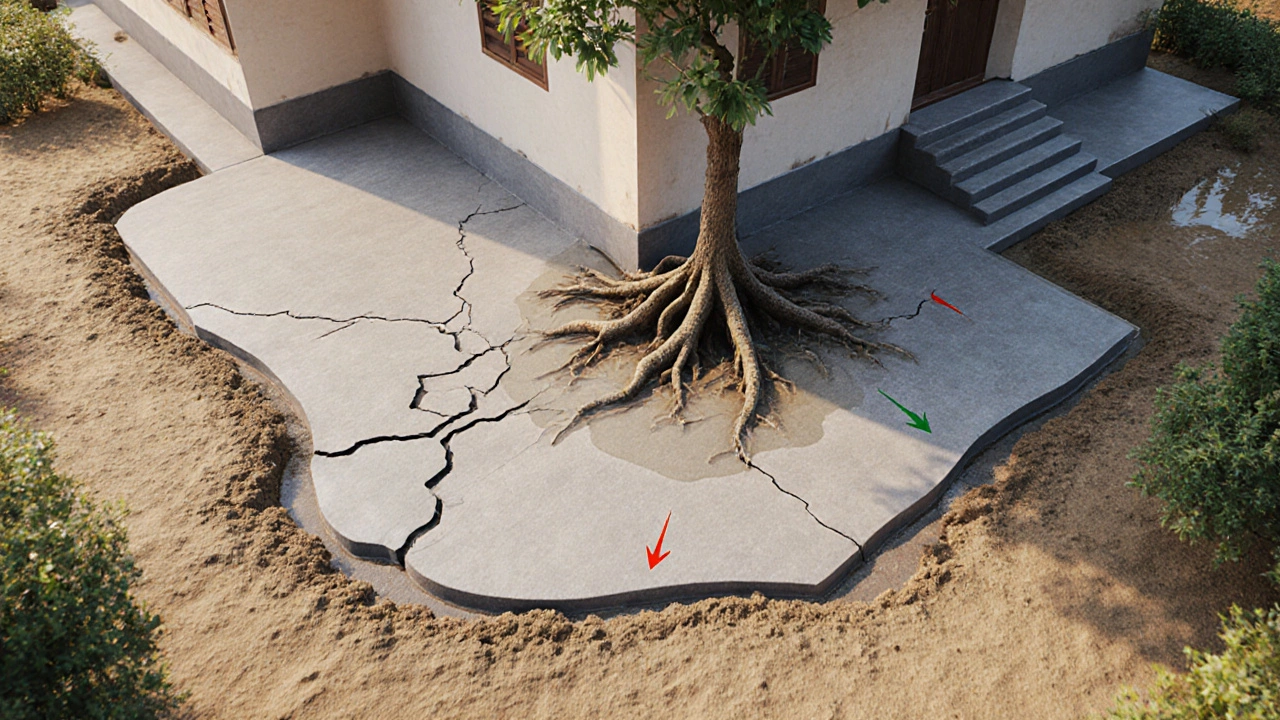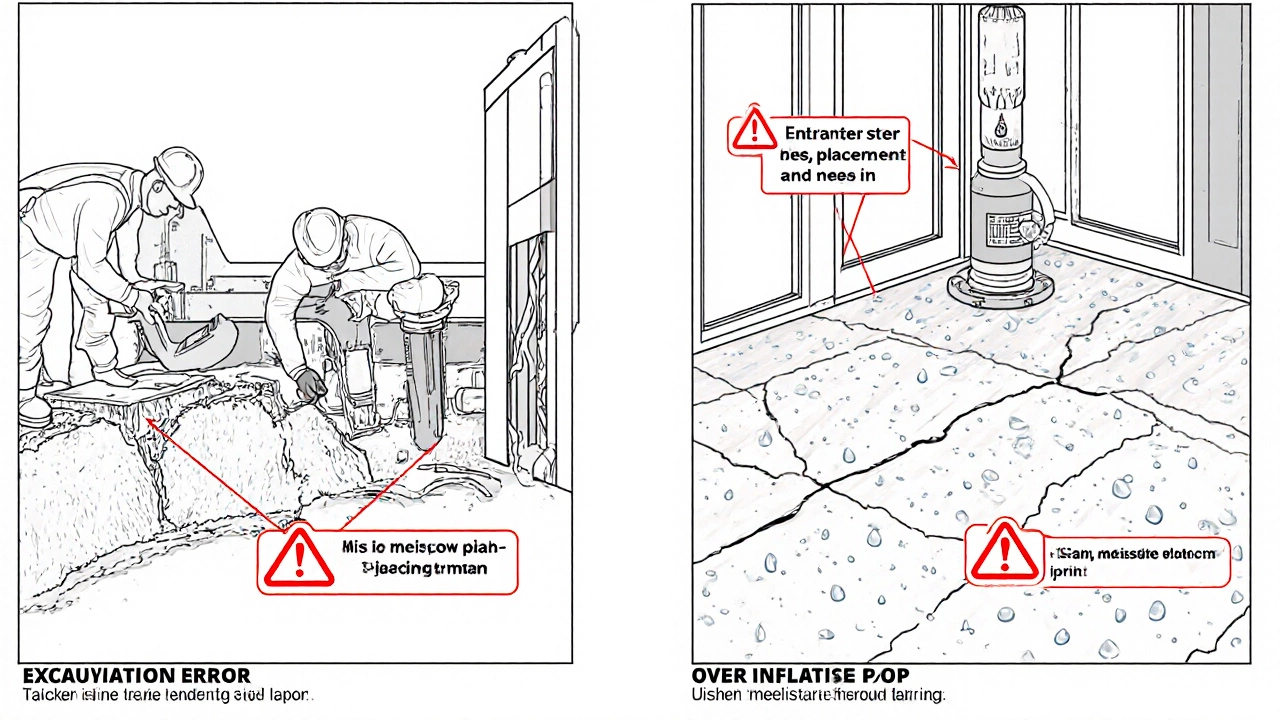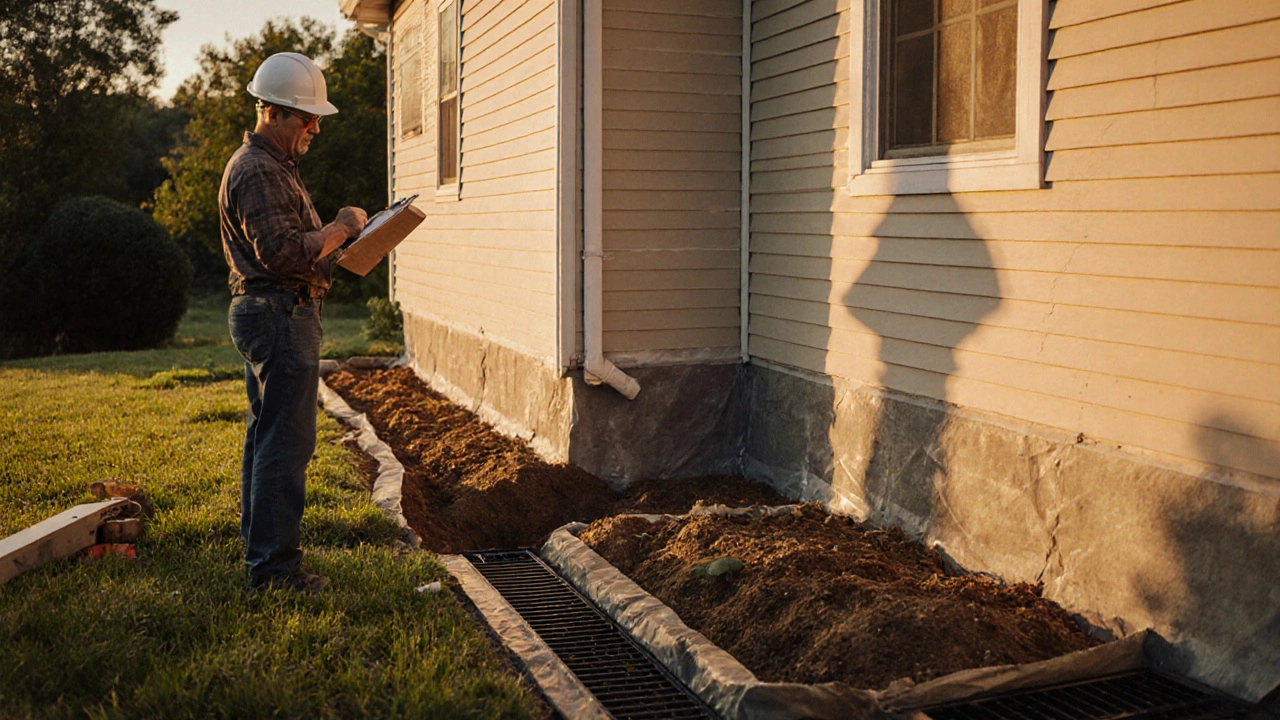Can Foundation Repair Cause More Damage? Risks & Prevention Guide

Foundation Repair Risk Assessment Tool
How to Use This Tool
Enter your foundation issue details and select a repair method to see potential risks and recommendations.
Repair Method Comparison
Underpinning: £8,000-£15,000 | Best for deep settlement in soft soil
Medium risk of new damage - improper pier placement can cause uneven settling
Pier & Beam: £5,000-£10,000 | Best for moderate settlement with accessible footings
Low-Medium risk of new damage - spacing errors may shift loads
Slab Jacking: £1,200-£3,500 | Best for localized dips and minor settlement
High risk of new damage - over-inflation can crack interior finishes
Carbon Fiber: £800-£2,200 | Best for cracked load-bearing walls
Low risk of new damage - bond failure if surface isn't pre-treated
When Foundation repair is needed, homeowners often wonder if the fix could end up making things worse. The short answer is yes - a poorly planned or executed job can create new cracks, shift loads, or even compromise the whole building. This guide walks through why that happens, which repair methods carry the highest risk, and how you can keep the work from turning into a nightmare.
What Triggers Foundation Problems in the First Place?
Before you can judge the repair process, understand the forces that bite at a home’s base.
- Soil settlement - when the ground compresses under weight, the slab or footings drop and cracks appear.
- Hydrostatic pressure - water builds up against the foundation wall, pushing it inward.
- Seasonal expansion and contraction of the earth, especially in clay‑rich regions.
- Tree roots that pry apart footings or drain moisture away from the footing area.
These pressures don’t respect the quality of the repair you choose; they keep acting until the underlying cause is addressed.
Common Repair Techniques and Their Built‑In Risks
Each fix tackles the symptom differently, and each comes with a set of pitfalls.
- Underpinning - new concrete or steel piers are installed beneath existing footings to transfer loads deeper. Underpinning works well for large settlements, but if the excavation is too deep or the new piers are misaligned, the structure can settle unevenly, creating fresh cracks.
- Pier and beam foundation repair - steel or timber piers are driven into firmer soil, then connected to the superstructure via beams. Incorrect pier spacing or failure to brace the beams can shift the load path, stressing walls that were previously stable.
- Slab jacking (mudjacking) - a slurry is pumped beneath a concrete slab to lift it back into place. Over‑inflating the slab can cause a sudden “pop” that cracks interior finishes, while under‑inflating leaves the original dip in place.
- Carbon fiber reinforcement - epoxy‑bonded strips reinforce cracked walls. If the surface isn’t properly prepared, the bond fails and the crack reopens under normal loads.
All of these methods require precise execution; a small misstep can introduce new structural stresses.
How Repair Work Can Actually Worsen Damage
Even with the right method, the process itself can be a source of trouble.
- Excavation that removes too much soil destabilizes surrounding footings. Without temporary shoring, the load shifts and side walls can buckle.
- Failing to install a proper Moisture barrier leaves the repaired area vulnerable to future water ingress, repeating the hydrostatic pressure issue.
- Skipping a post‑repair structural engineer review means hidden stresses go unnoticed until they manifest as new cracks. The engineer, Structural engineer, can verify load paths and confirm that the repair didn’t compromise the building’s integrity.
- Using low‑quality materials - cheap concrete, weak steel, or sub‑standard epoxy - reduces the repair’s lifespan and may cause it to fail prematurely, forcing another round of work.
These errors often stem from cutting corners, lack of expertise, or trying to save money with DIY shortcuts.

Best Practices to Prevent New Damage During Repair
Follow these steps to keep the repair from becoming a second problem.
- Hire a qualified Structural engineer to assess the cause and design a solution.
- Address moisture issues first - install proper drainage, French drains, and a Moisture barrier around the foundation.
- Choose the repair method that matches the failure mode. For deep settlement, underpinning is usually safer than slab jacking.
- Ensure all excavation is shored or braced. Temporary supports keep loads steady while permanent elements are installed.
- Inspect material certifications. High‑grade concrete, approved steel, and FDA‑rated epoxy provide long‑term strength.
- After the work, have the engineer perform a walk‑through to confirm that settlement, cracks, and load paths are within acceptable tolerances.
When these precautions are taken, the likelihood of causing additional damage drops dramatically.
DIY vs. Professional Repair: Where to Draw the Line
Many homeowners ask if they can save money by doing the work themselves. The answer depends on the scope.
- Minor crack sealing - small hairline cracks in a slab can be filled with epoxy or polyurethane by a handy DIYer. No structural risk here.
- Minor settling - if you notice a slight dip in a single floorboard, a simple mudjacking job might be doable with professional guidance, but beware of over‑lifting.
- Significant settlement, large cracks, or wall movement - these are red flags that require a Structural engineer assessment and a licensed contractor. The risks of mis‑aligning piers or removing too much soil are too high for a DIY approach.
When in doubt, the cost of a professional assessment is a fraction of the expense of fixing a repair gone wrong.

Comparison of Repair Methods - Risk of Causing Additional Damage
| Method | Typical Cost (UK) | Common Use Case | Risk of New Damage | Best‑Fit Scenario |
|---|---|---|---|---|
| Underpinning | £8,000‑£15,000 | Deep settlement, unstable soil | Medium - improper pier placement can cause uneven settling | When soil is soft to 3‑4 m deep and loads are high |
| Pier & Beam | £5,000‑£10,000 | Moderate settlement, accessible footings | Low‑Medium - spacing errors may shift loads | Shallow settlements where piers can reach firm strata quickly |
| Slab Jacking (Mudjacking) | £1,200‑£3,500 | Localized dips, minor slab settlement | High - over‑inflation can crack interior finishes | Small depressions under non‑load‑bearing areas |
| Carbon Fiber Reinforcement | £800‑£2,200 | Cracked load‑bearing walls | Low - bond failure if surface isn’t pre‑treated | When wall cracks are wide but not caused by foundation movement |
Quick Checklist Before Starting Any Foundation Repair
- Get a full inspection from a licensed Structural engineer.
- Identify and fix water drainage issues (gutters, grading, French drains).
- Choose a repair method that matches the diagnosed problem.
- Verify contractor credentials and ask for references of similar jobs.
- Ensure all temporary shoring is in place before permanent work begins.
- Schedule a post‑repair inspection to confirm that no new cracks have appeared.
Frequently Asked Questions
Can a DIY foundation repair cause structural failure?
Yes, if the work involves excavation, load‑transfer changes, or fixing large cracks without professional input, it can weaken the building’s core and lead to failure. Small crack sealing is generally safe, but anything that shifts loads should be left to experts.
What signs indicate that a repair has caused more damage?
Look for new cracks appearing within weeks of the job, doors or windows that start sticking, uneven flooring, or visible sagging in walls. If any of these show up, call the contractor and a structural engineer immediately.
Is underpinning always the safest choice?
Underpinning is very effective for deep settlement, but it’s not automatically the safest. The soil type, access for equipment, and correct pier placement all matter. In some cases, pier and beam or slab jacking may be less invasive and carry lower risk.
How long does a typical foundation repair take?
Simple crack repairs can be done in a day. Underpinning or pier installation usually requires 3‑7 days, depending on weather and site access. Always allow extra time for curing concrete and post‑repair inspections.
What maintenance can prevent future foundation issues?
Maintain proper drainage, keep landscaping away from the foundation, monitor moisture levels in the soil, and schedule regular inspections, especially after heavy rains or extreme temperature changes.
By understanding where foundation repair can go wrong and following proven best practices, you can protect your home from turning a fix into a fresh set of problems. Remember, the safest path is a thorough assessment, the right method, and a qualified professional to oversee the work. foundation repair doesn’t have to be a gamble when you keep these guidelines in mind.
Write a comment